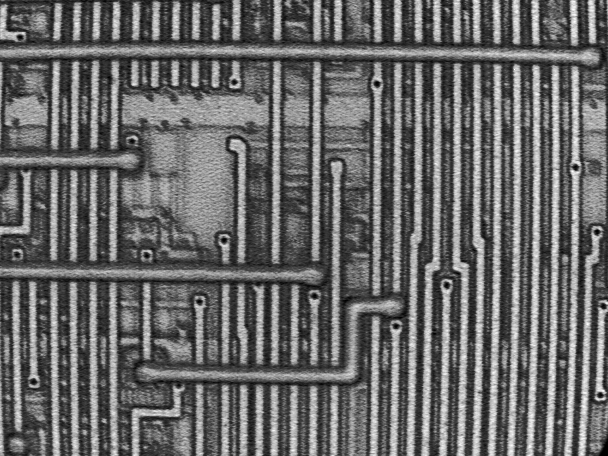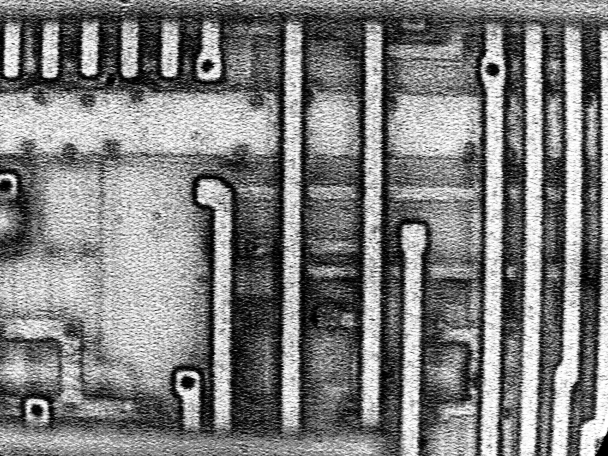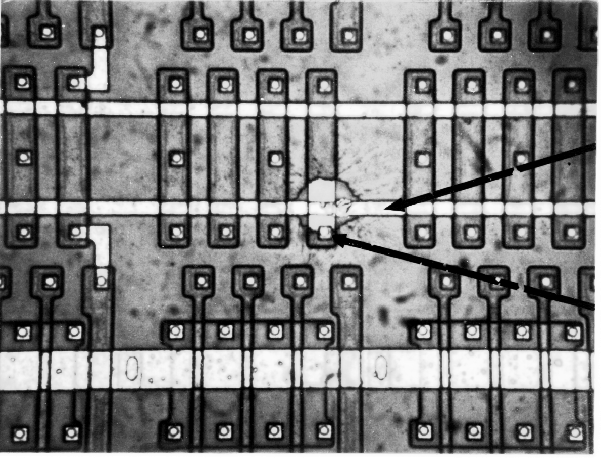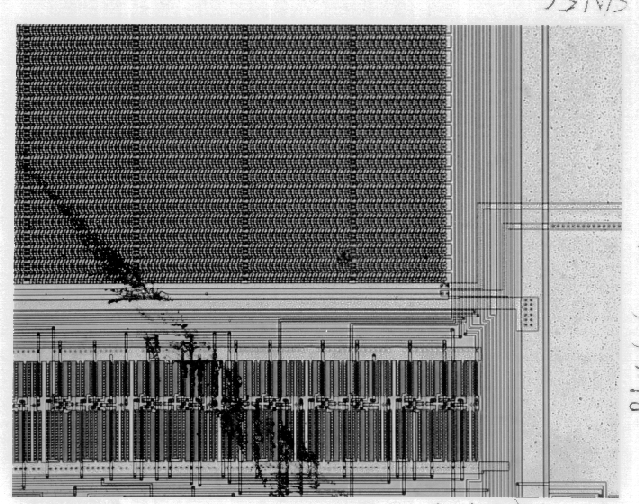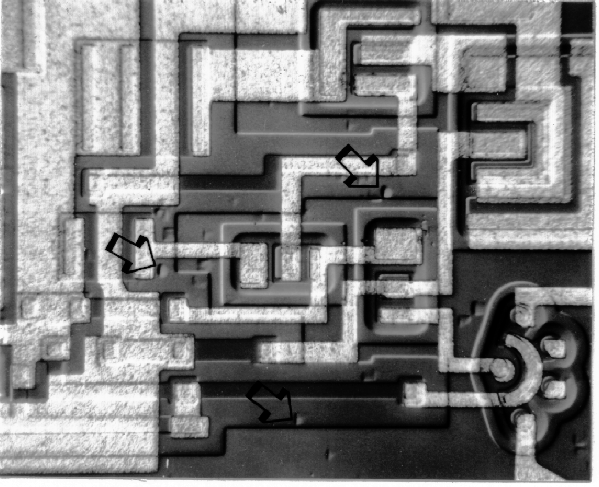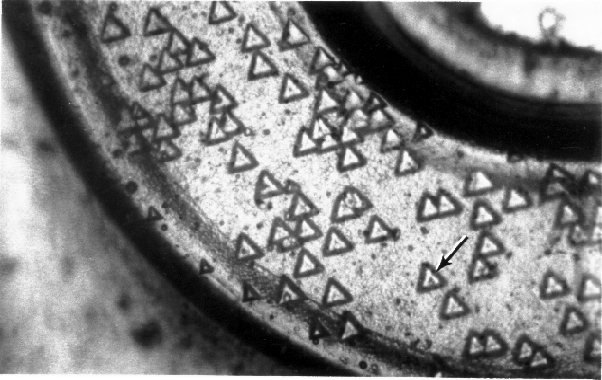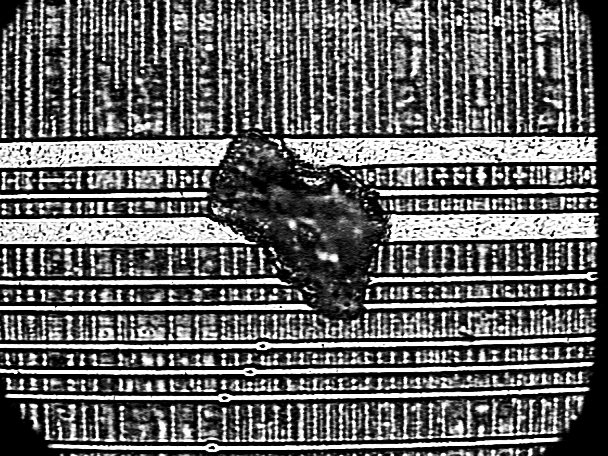System Maintenance occurs every Friday.
Chemical deprocessing of ICs reveals physical defects related to the circuit's observed failure mode. After each deprocessing step, the die is carefully examined for defects and anomalies potentially related to the failure mode. Optical examination of the deprocessed die involves the use of a high-power optical microscope to locate, image, and photograph defects.
Optical examination is performed after each deprocessing step to locate defects related to the device failure.
Chemical deprocessing of the IC is first performed as described in Deprocessing. Optical examination is then performed after each deprocessing step by using a high power optical microscope to inspect the die for anomalies. Inspection is begun at a fairly low magnification (50X) and increased up to 500X as necessary to locate anomalies. Based on electrical or other test data, you will know what part of the die to concentrate on.
Optical examination after deprocessing is performed immediately following each deprocessing step to examine the die for anomalies. Optical examination is generally performed during deprocessing to ensure that the layer being etched has been completely removed. Optical examination is non-destructive and should be performed prior to SEM imaging, which leaves a carbon residue on areas that have been imaged.
